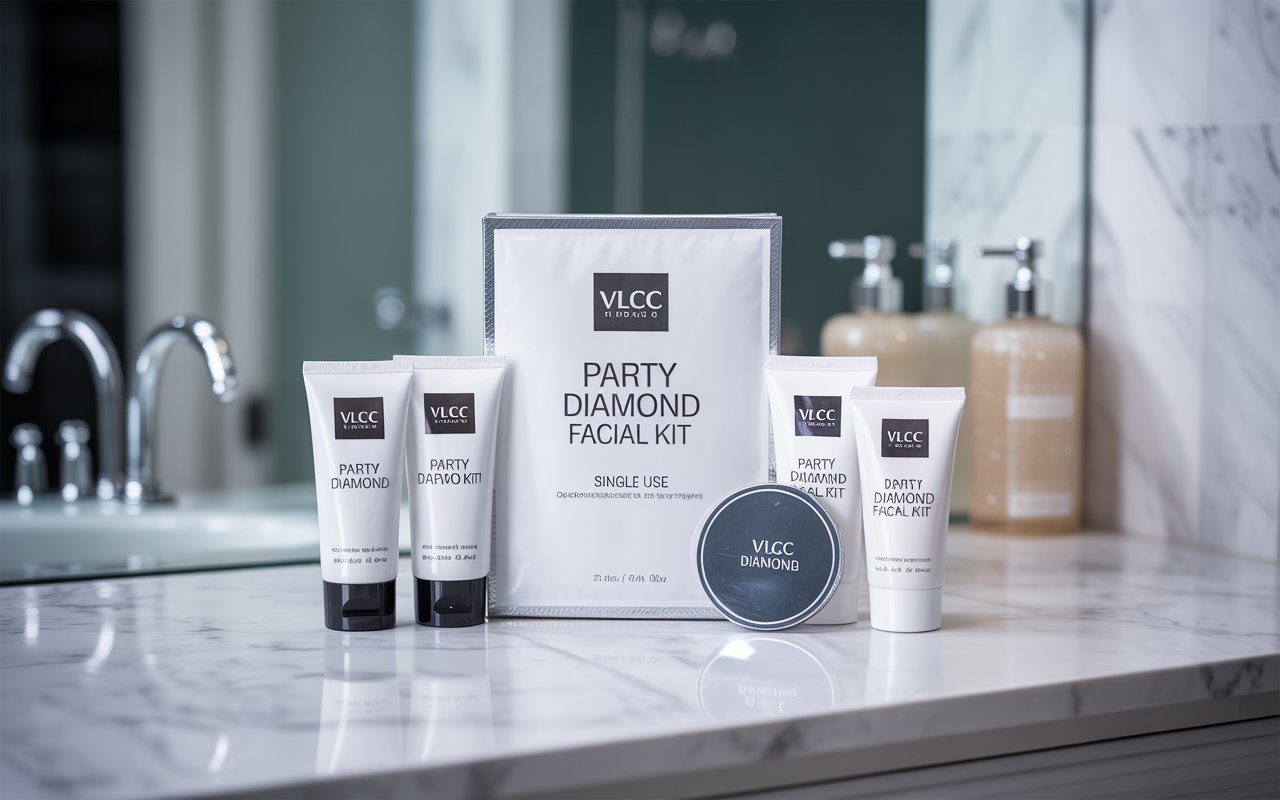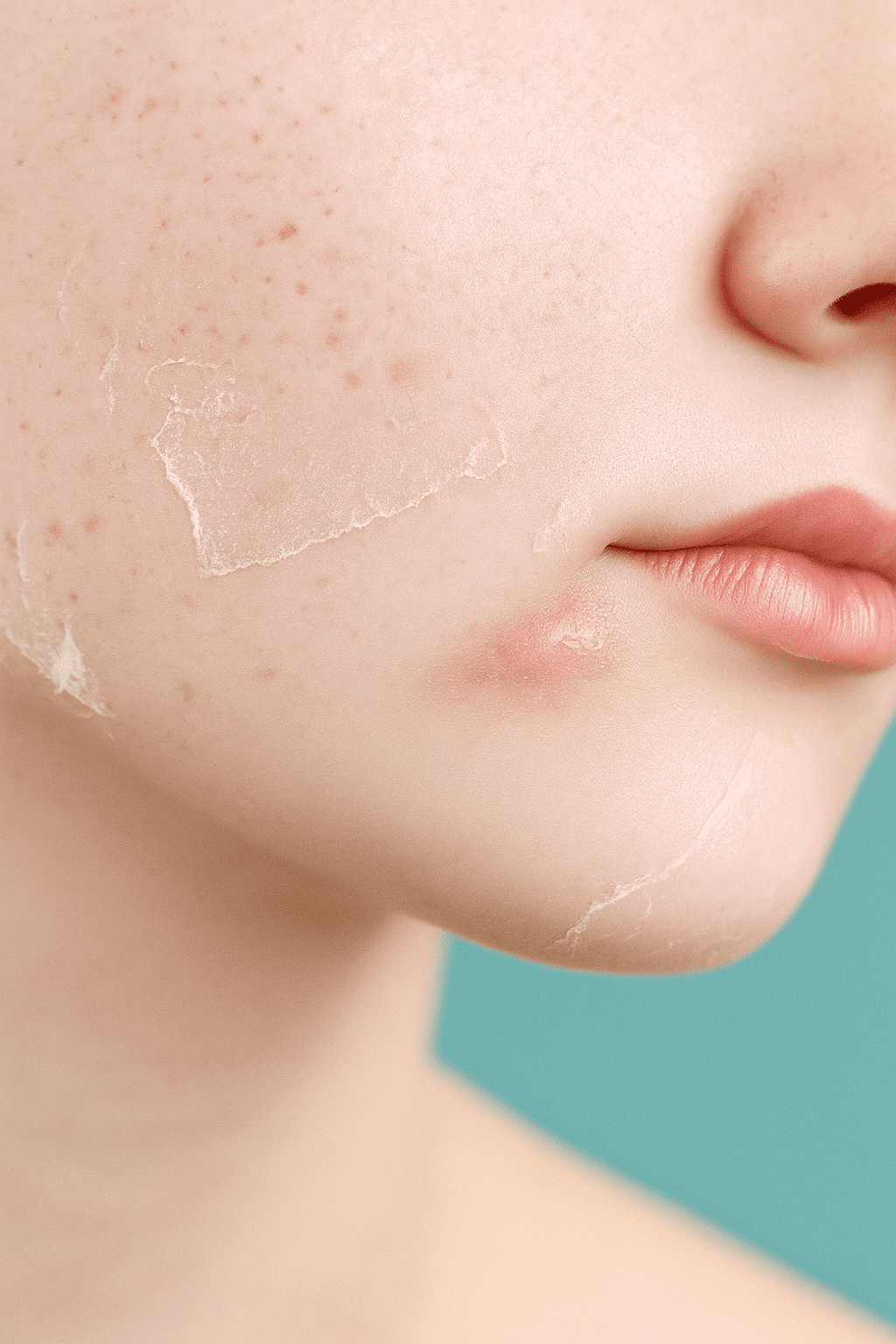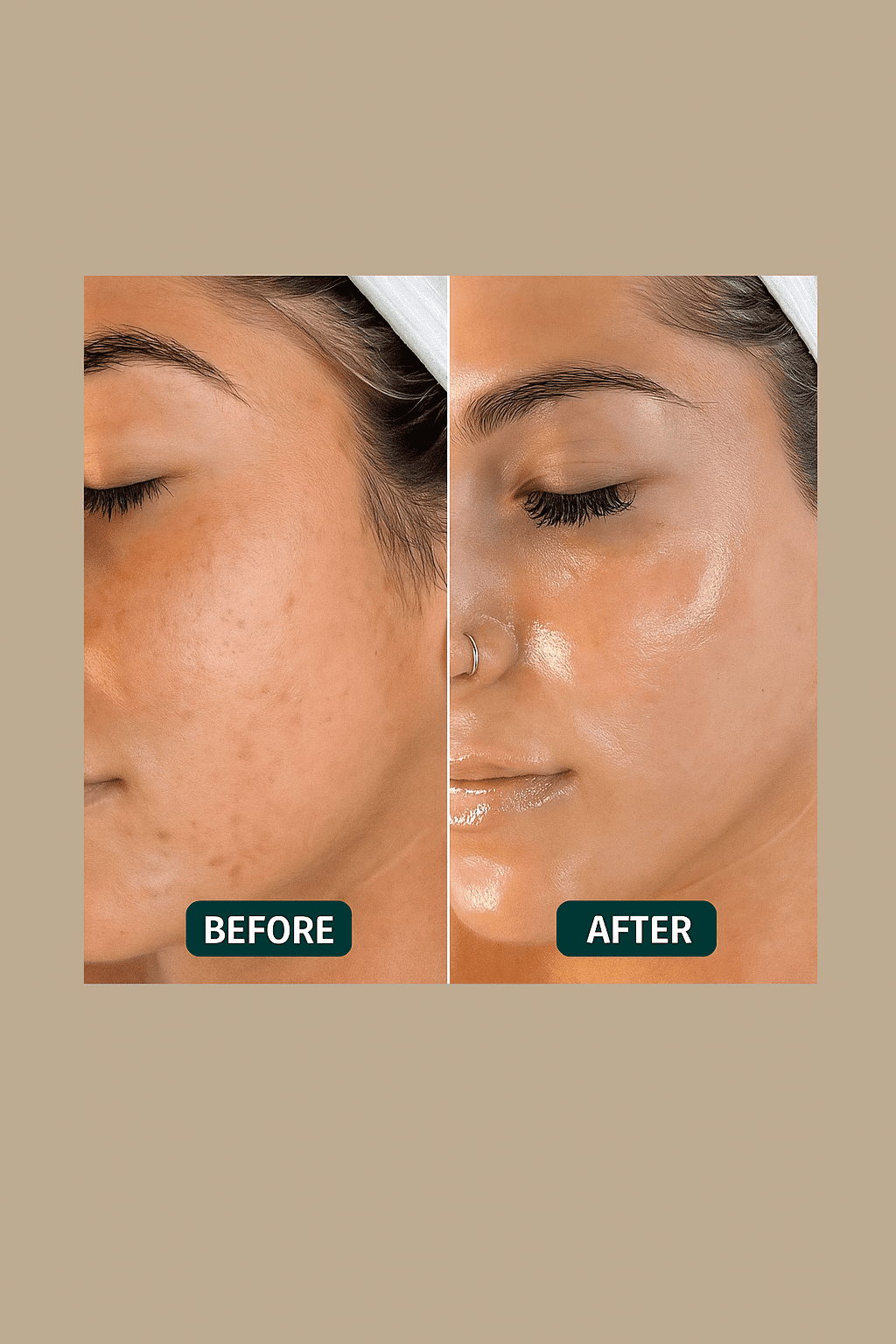Dry skin on the face can often feel tight, itchy, or look flaky. This is a common and frustrating issue that can make your complexion appear dull and even affect your confidence.
However, a great solution is a professional facial treatment. Think of it not just as a luxury, but as a direct and effective treatment for your skin’s specific needs.
The right facial can do more than just feel good; it provides deep moisturizing and delivers essential nutrients directly to your skin cells.
This guide will show you the best hydrating facials that offer genuine, noticeable benefits. We will help you find treatments that give lasting relief and restore a healthy, dewy glow to your skin.
Why Your Face Gets Dry Skin
Dry skin on the face is very common. It often happens when the skin does not make enough natural oils to keep itself soft.
These oils work like your skin’s own moisturizer. Without them, the skin loses water fast and feels rough or tight. That’s why getting a proper skin check before any facial is so helpful. It reveals what your skin truly needs and ensures the facial provides deep and lasting hydration.if you want know more info, this blog “
Before the Glow: Important Insights Only Skin Analysis
How to Know If You Skin Problem
It is easy to spot dry skin. Look for these common signs:
- Flakes or rough patches
- A feeling of tightness, especially after washing your face
- Skin that looks dull or ashy
- Makeup that does not go on smoothly
Common Reasons for Your Face
Many everyday things can cause this issue:
- Weather: Cold winter air and dry indoor heating are big causes.
- Harsh Products: Soaps and cleansers with strong chemicals strip your skin’s natural oils.
- Hot Water: Washing your face with very hot water can dry it out.
- Rubbing Your Skin: Scrubbing your face too hard with a towel hurts your skin barrier.
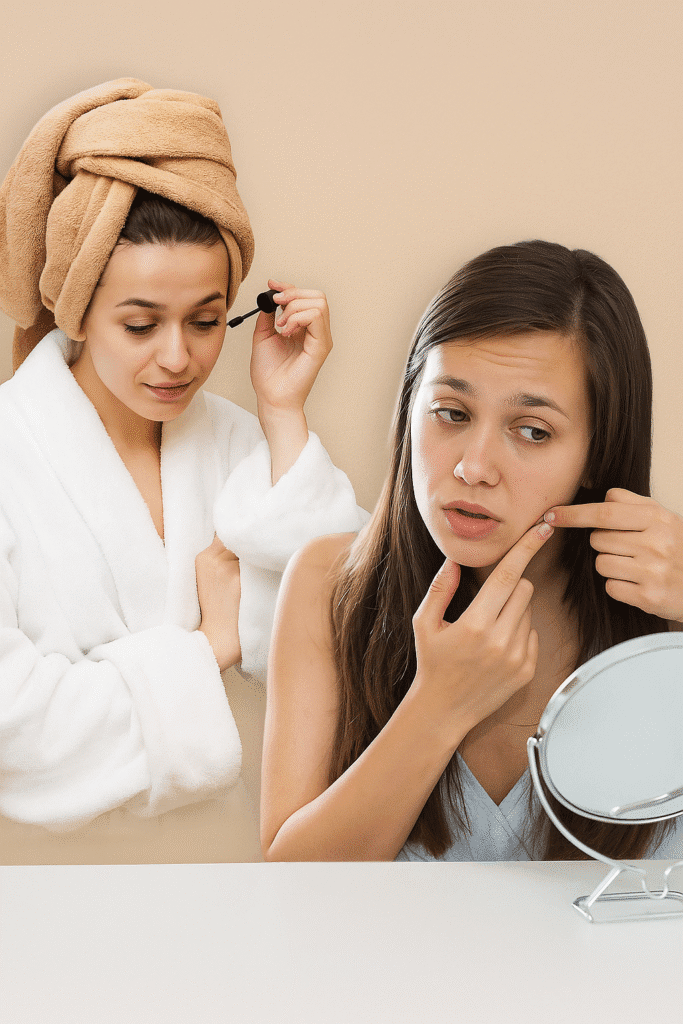
Dry Skin vs. Dehydrated Skin: What’s the Difference?
This is an important difference! Many people get these two confused.
| Aspect | Dry Skin | Dehydrated Skin |
|---|---|---|
| What it is | A skin type. You lack natural oils. | A skin condition. You lack water. |
| How it feels | It can feel tight and look dull, but you might still get oily. | Can feel tight and look dull, but you might still get oily. |
| The main fix | You need to add oil and moisture with a good cream. | You need to add water with a hydrating serum and drink more water. |
Simple Tips :
Here are some easy, actionable tips to help your skin feel better:
- Be Gentle When You Wash: Use a soft, soap-free cleanser and lukewarm water.
- Moisturize Right After Bathing: This traps water in your skin. This is a dermatologist’s top tip!
- Use a Humidifier: This machine adds moisture to dry indoor air, which helps your skin.
- Drink Plenty of Water: This helps your entire body, including your skin, stay hydrated from the inside.
Facial Types for Dry Skin on face
- Basic Facial
This is the common type. It uses gentle cleaning, scrubbing, and cream to make skin soft and fresh. Sometimes blackheads are also removed. - Light Therapy Facial
A special light is used on your skin. Red light helps with fine lines. Blue light calms pimples and dryness. Safe and painless. - Skin Needling Facial
Tiny needles are rolled on the face to wake up new skin growth. It helps reduce marks and makes skin smoother. - Light Flash Facial (IPL)
A strong light is used to fade sun spots, freckles, and redness. Not good for everyone, but very helpful for some skin problems. - Water Power Facial (Hydrafacial)
This one deeply cleans, pulls out dirt, and pushes water-rich serums into the skin. Great for dry or tired skin. - Soft Peel Facial
A mild acid cream is used to melt away dead, rough skin. The face looks brighter and smoother after. - Skin Tightening Facial
Uses soft electric current or radio waves to lift and firm loose skin. Makes the face look younger. - Crystal Scrub Facial (Microdermabrasion)
Tiny crystals rub away the top dry layer of skin. Skin looks shiny but may be harsh. These facials are Safe for both sensitive and dry skin. - Blade Smooth Facial (Dermaplaning)
A safe tool gently removes dead skin and tiny hairs. Skin feels super smooth and glows.
Which Facial Works Best?
The right facial depends on your skin type and the issue you want to fix.
- For dry skin → a moisture-boosting facial is a good choice.
- For scars, fine lines, or wrinkles → microneedling or a light-based facial works well.
- For dull or flaky skin → a gentle peel or skin-polishing treatment is more suitable.
How to Get a Facial for Hydrated Skin
A facial is a special skin treatment done by an expert. It involves several steps like cleansing, exfoliating (gently scrubbing off dead skin), steaming, and applying a hydrating mask. The goal is to deeply clean, treat specific problems like dryness, and help your skin feel amazing.
Why Professional Treatments Moisturize Than Creams
While your daily moisturizer is very important, it mostly works on the surface. A facial provides a more powerful solution for dry skin because:
- Deep Cleaning: It first removes all the dirt, oil, and dead skin cells that can block your pores. This cleaning process allows moisturizers to sink in much better afterward.
- Stronger Ingredients: Experts use products with higher concentrations of good ingredients like hyaluronic acid and glycerin. These are molecules that attract and hold a huge amount of water.
- Better Absorption: Techniques like gentle steam and exfoliation open up the skin. This allows the moisturizing serums and creams to penetrate deeply into the skin layers, not just sit on top.
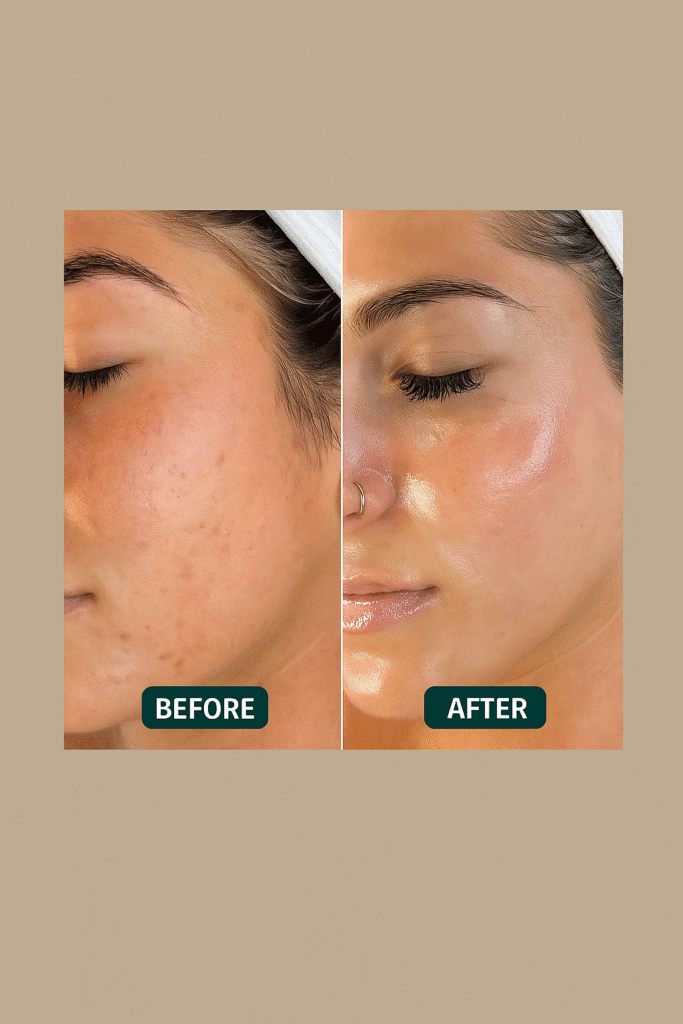
Expert Tips: Science Behind Hydrating Facials
Dermatologists (skin doctors) explain that these facials are effective because they address the root cause of dryness.
- They Repair the Barrier: Our skin has a natural protective barrier. When this is damaged, moisture escapes. A key step is using products that repair the skin’s barrier, trapping water inside.
- They Use Smart Ingredients: As one expert notes, “Ingredients like hyaluronic acid can hold up to 1000 times its weight in water, making it a superstar for dehydration.”
- They Are Customized: A professional will choose the right products for your exact skin type, making the treatment much more effective than a one-size-fits-all approach.
Pros and Cons:
| Pros of Getting a Facial | Cons to Consider |
|---|---|
| Provides deep, long-lasting hydration. | More expensive than at-home products. |
| Offers a deep cleanse for better product absorption. | Requires you to book an appointment. |
| Uses professional-strength, effective ingredients. | Some people might have slight redness after. |
| Gives expert advice for your specific skin concerns. | Not a one-time fix; needs to be done regularly. |
Actionable Tip: For the best results, drink plenty of water after your treatment to help your skin stay plump and hydrated from the inside out
How to Get Moisture for a Healthy Glow
The main goal for dry skin is to add water and lock it in. These treatments are made for that.
- Hydrating Facial: This is a basic but powerful treatment. It uses strong moisturizers (emollients and humectants) that soak deep into your skin to quench its thirst.
- Moisturizing Oil Facial: This facial uses natural oils like argan or jojoba oil. These oils are great because they soothe the skin and create a protective layer to stop moisture from escaping.
- Oxygen Facial: This treatment pushes a stream of oxygen and hydrating serums directly onto your face. It gives you an instant glow and plumps up your skin with moisture.
How to Repair Your Skin Barrier, Reduce Flakes
Sometimes, dry skin has a damaged barrier and dead skin cells on top. These treatments help fix that safely.
- Gentle Chemical Peel: Don’t let the name scare you! A mild peel uses soft acids (like lactic acid) to gently dissolve and remove the layer of dead, flaky skin. This allows your moisturizers to work much better.
- Dermaplaning: This is a physical exfoliation where a trained expert uses a small, safe tool to scrape off fine hair and dead skin from the surface. The result is incredibly smooth and bright skin. It is a great option for those who find chemical exfoliation too harsh.
How to Use Advanced Technology Skin Relief
Technology can offer unique solutions for skin problems.
- Hydrafacial: This popular multi-step treatment deeply cleanses, exfoliates, and then hydrates your skin all in one session. It’s like a powerful drink of water for your face, making it excellent for repair and renewal. However, it’s helpful to understand the Hydrafacial pros and cons for dry skin to see if it’s the right fit for you.
- LED Light Therapy: This treatment uses special lights. For dry skin, the blue and red lights are best. They help to calm irritation and reduce any redness that comes with dryness.
1. Deeply Cleans and Refreshes the Skin
Facials go beyond daily washing. They remove dirt, oil, and impurities stuck deep inside your pores. This helps your skin look fresh, clear, and more glowing.
2. Removes Layers of Dead, Rough
Over time, dead skin cells build up on the surface, which can make your face look dull and uneven. A key Janssen facial benefit for dry, flaky skin is gentle exfoliation. This process carefully removes these dry layers to reveal the new, healthy skin underneath.
Not only does this instantly brighten your complexion, but it also allows your everyday moisturizers and serums to absorb much more effectively, giving you better results from your skincare routine.
3. Restores Softness and Hydration
Dryness makes skin feel tight and rough. Facials add intense moisture with masks, creams, and serums. They bring back softness, making your skin smooth and plump.
4. Improves Tone and Smoothness
Regular facials can reduce dullness, uneven patches, or rough texture. With exfoliation and hydration, your skin becomes brighter, more even, and silky to the touch.
5. Gives Relaxation and Stress Relief
Facials are not just for the skin—they calm the mind too. The gentle massage and soothing process reduce stress, improve blood flow, and leave you feeling relaxed and refreshed
Comparing:
| Treatment | Best For | Things to Consider |
|---|---|---|
| Hydrating Facial | First-timers, gentle and basic moisture boost. | Very safe, but results are not as long-lasting as other options. |
| Moisturizing Oil Facial | Extra-dry, sensitive skin that needs soothing. | Avoid if you have oily or acne-prone skin, as it might feel too heavy. |
| Gentle Chemical Peel | Dull, flaky skin that needs exfoliation. | Your skin might be slightly red for a few hours after the treatment. |
Expert Tip: The most important step is to talk to a skincare expert. They can look at your skin and tell you which treatment will solve your specific problem. Always drink plenty of water to help your skin stay hydrated from the inside out
Reducing Dry Patches
Does your skin have dry, flaky areas that are hard to manage? A facial specifically targets these problem spots.
The expert uses techniques and ingredients that break up and remove these dry patches. This leaves your skin looking clean, clear, and evenly hydrated all over.
How to Boost Skin’s Natural Glow
Dry skin on face often looks dull because it has too many dead cells on its surface. A facial washes all that away. Clearing off the dullness it allows your skin to reflect light better, which gives you a healthy, natural radiance. This new glow can really boost your confidence and make you feel great.
Here is a quick look at why this treatment is so helpful:
- Reaches deeper layers for lasting moisture.
- Exfoliates gently to make skin smooth.
- Targets flakes for a clear complexion.
- Restores radiance for a healthy look.
Professional Help vs. Doing It At Home
| Professional Facial | At-Home Facial |
|---|---|
| Uses stronger, clinical-grade products | Uses milder, store-bought products |
| Performed by a trained expert | Done by yourself |
| Best for serious dryness and expert advice | Good for mild dryness and maintenance |
| More expensive | Very affordable and convenient |
Expert Tip: For the best results, drink plenty of water after your facial. This helps your skin cells stay plump and hydrated from the inside out!
Best Natural Masks for Maximum Hydration
You don’t need expensive products. Some of the best hydrating ingredients are probably in your kitchen.
- Honey: A natural humectant, meaning it draws moisture from the air into your skin. It is also soothing and antibacterial.
- Aloe Vera: Perfect for calming irritated or sunburned skin. It is incredibly cooling and provides a deep level of hydration.
- Avocado: Mashed avocado is rich in natural oils and vitamins. It is excellent for nourishing and softening dry skin.
- Hyaluronic Acid: While not a “natural” item you can eat, serums with this ingredient are fantastic. It can hold up to 1000 times its weight in water, making it a hydration powerhouse.
Common Mistakes to Avoid for Best Results
It’s easy to make mistakes that can ruin the good work of your facial. Here are the biggest ones to watch out for:
- Do Not Skip Sunscreen: We cannot say this enough. Sun exposure is the number one thing that can reverse the positive effects of your facial.
- Avoid Harsh Products: Do not use any exfoliating scrubs, acne treatments, or anti-aging products for at least three days. Let your skin rest.
- Resist Touching or Picking: Your skin may purge impurities, but do not pick at any spots. This can lead to scarring and infection.
- Skip the Heavy Exercise: Try to avoid heavy sweating for at least 24 hours. Sweat can irritate the freshly cleaned pores.
- Don’t Use Hot Water: Wash your face with lukewarm water, as hot water can dry out and irritate your sensitive skin.
Expert Tip: A good rule is to treat your skin like it has a slight sunburn—be extra gentle, super hydrating, and fiercely protective.
Following these simple steps will ensure your skin stays clear, bright, and healthy for as long as possible.
When to Choose a Professional Facial or a Home Facial
Both professional and home facials have their place in a good skincare plan. It’s all about knowing when to use each one.
Choose a Professional Facial when:
- You need a deep, thorough cleaning.
- You want to tackle a specific problem, like stubborn acne or dark spots.
- You can enjoy a relaxing experience with expert advice.
- You want to use special machines that you don’t have at home.
Choose a Home Facial when:
- You need a quick refresh between professional appointments.
- You want to maintain your skin’s cleanliness daily.
- You are on a tight budget.
- You are using simple, gentle products you know are safe for your skin.
Expert Tip: “Think of a professional facial as a major service for your skin and a home facial as regular maintenance. You need both for long-lasting results!”
faqs:
Which facial is best for extremely dry skin?
A hydrating facial with hyaluronic acid or a cream-based treatment is ideal. These facials focus on replenishing moisture and repairing your skin’s protective barrier, leaving it deeply nourished instead of stripped.
What facial treatment gives the best results?
For lasting results, choose a facial that includes hydration and barrier repair. Look for treatments using ingredients like hyaluronic acid to plump skin and ceramides to lock in moisture for a long-term healthy glow.
What deficiency causes dry skin?
Dry skin can be linked to deficiencies in Omega-3 fatty acids, Vitamin D, and Vitamin E. These nutrients are vital for maintaining your skin’s lipid barrier and overall health. A balanced diet is key.
What should I avoid if I have dry skin?
Avoid harsh astringents, alcohol-based toners, and very hot water. These can strip your skin’s natural oils, worsening dryness. Also, be cautious with over-exfoliating, which can damage your skin’s protective layer.
Is retinol safe for dry skin?
Yes, but start slowly. Use a low concentration (0.3% or less) twice a week and always pair it with a moisturizer to combat initial dryness. Studies show “sandwiching” it between cream layers reduces irritation.
Is hyaluronic acid good for dry skin?
Absolutely. Hyaluronic acid is a hydration hero—it can hold up to 1000 times its weight in water. For best results, apply it to damp skin and seal it with a moisturizer to prevent moisture loss.
Can I use retinol every day?
Most people should not, especially with dry skin. Daily use often irritates. Begin with 1-2 times per week and gradually increase only if your skin tolerates it without redness or peeling.
Is vitamin C good for dry skin?
Yes, vitamin C is a powerful antioxidant that protects dry skin on face from environmental damage. Choose a serum in a creamy or silicone base, as these are less drying than purely water-based formulas.
Can collagen help dry skin?
Topical collagen molecules are often too large to penetrate deeply. However, collagen-boosting ingredients like retinoids and peptides can improve skin elasticity and hydration from within by supporting your skin’s structure.
What’s the best serum for dry skin?
A serum rich in humectants like hyaluronic acid or glycerin is best. These ingredients draw moisture into the skin. For example, serums with multiple weights of hyaluronic acid hydrate different skin layers.
Is kojic acid good for dry skin?
Use with caution. Kojic acid is for hyperpigmentation, but it can be drying and cause irritation. If you have dry skin, it’s best to avoid it or use it only under a dermatologist’s guidance.
Which toner is best for dry skin?
Choose an alcohol-free, hydrating toner. Look for ingredients like rosewater, glycerin, or hyaluronic acid. These toners prep your skin to absorb moisture instead of stripping its natural oils.
Which sunscreen is best for dry skin?
A moisturizing mineral or hybrid sunscreen is best. Look for formulas with hydrating ingredients like hyaluronic acid or ceramides. Cream-based sunscreens provide essential protection without further drying your skin.
Which brand of hyaluronic acid is best?
Effective options exist at various prices. The “best” brand is one that works for you. Popular, well-reviewed choices include The Ordinary for affordability and Vichy Mineral 89 for its added minerals.
conclusion,
If you struggle with dry skin on face, special facials can truly help. These treatments use methods that add deep moisture and important nutrients directly to your skin. The best facials work by hydrating your face and locking in that moisture to repair the skin barrier.
This means you will see a real difference, leaving your face feeling soft, smooth, and looking healthy and refreshed.


